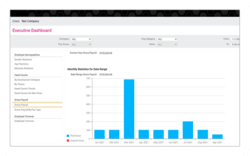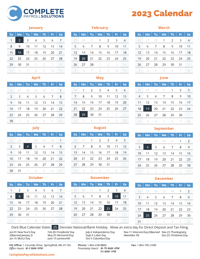How Much Does Offering A 401(K) Cost An Employer? Pricing & Fees
The vast majority of employers offer a traditional 401(k) or similar plan. Since retirement plans like 401(k)s are an important recruitment and retention tool, you may be considering offering one at your workplace, especially in today’s tight labor market. But, if you’re like many businesses, you’re probably wondering what expenses you may incur that will contribute to your business’s overall 401(k) cost. Let’s find out.
Since we know cost is often a top concern when weighing options that will boost your benefit offerings, in this article, we’ll help you understand what 401(k) fees you’ll be responsible for if you decide to offer a plan. After reading this article, you’ll know all the costs involved with providing this employee benefit to your workforce to decide if a 401(k) fits within your budget.
How much does a 401(k) cost as an employer?
The cost of offering 401(k) depends on a number of factors and can range considerably. For example, while a company with 10 employees can expect to pay anywhere from $1,400 to $5,600 to get a plan up and running and cover its administration for the first year, a larger business may pay more or possibly even less depending on things like plan design, the number of employees, or their TPA service provider.
To help you understand the various expenses, the 401(k) fees that the employer pays generally fall into three categories:
401(k) Set-Up Costs
When you decide to start a 401(k) plan at your company, you’ll likely have a one-time initial fee to set it up. This will cover activities like setting up the new plan and educating your employees about the plan.
For these services, you can expect to pay anywhere between $500 to $2,000. Keep in mind that there’s a tax credit for start-up costs for small businesses with less than 100 employees, which the SECURE Act increased to up to $5,000 annually for the first three years. You can claim the credit to cover the costs to set up and administer your plan as well as educate employees about it.
401(k) Administration Fees
Because of the complexities involved in managing 401(k)s, if you’re like most companies, you’ll hire a third-party administrator (TPA) to maintain your plan. That means you’ll be responsible for covering their costs, which include everything needed for the day-to-day operation of the plan like:
- informational materials
- statements
- annual nondiscrimination testing
- completion of Form 5500
- approving loans and distributions
The more complicated the plan design, the higher the 401(k) fees for administration may be, but you will generally see costs ranging from $750 a year to $3,000. In addition to this 401(k) cost, you’ll pay what’s known as a per-participant fee that will be somewhere in the range of $15 to $60 a year for each person enrolled.
401(k) Matching Costs
A 401(k) match means that you’ll contribute an amount that matches what your employee puts into their plan up to a certain percentage or amount. As an employer, you don’t have to offer a 401(k) match. But there are some advantages.
First, it can make your plan more attractive to new and existing employees. Since most employers that provide a traditional 401(k) offer a match, this feature can help ensure workers see your benefit as competitive. Just be sure the match is also on par with what other companies are offering, which is typically between 4% and 6% of pay.
Also, a safe harbor match will eliminate the need for non-discrimination compliance testing. There are 4 different types of safe harbor 401K(k) plan designs:
- Non-elective: With this type of safe harbor plan, you’ll make a year-end contribution, giving everyone who is eligible a contribution equal to 3% of their pay. That’s the case even if they’re not contributing to the plan.
- Basic match: A basic safe harbor 401(k) plan has a required employer match. You’ll need to match 100% of the first 3% of an employee’s contribution, then 50% on the next 2%.
- Enhanced match: In this safe harbor plan arrangement, you match 100% of the first 4% of an employee’s contribution.
- Auto-enrollment: A qualified automatic contribution arrangement (QACA) must have a minimum automatic contribution percentage of 3% of pay for the first year of an employee’s participation, which increases to 4% in the second, 5% in the third, and 6% in the fourth year. You would have to match 100% of the first 1% of an employee’s contribution plus 50% on the next 5% for a maximum of 3.5% of pay on the first 6%. Alternatively, you can make a non-elective contribution of at least 3% of compensation to all eligible non-highly compensated employees.
Are there any hidden 401(k) fees that can drive up costs?
In addition to these standard fees behind your 401(k) cost, there may be some surprise expenses that you’ll want to watch out for. These could include costs for services like:
- Terminating the plan
- Rolling over funds from a previous provider or to a new one
- Changing your plan design, which requires a plan amendment
- Integrating your 401(k) with your payroll platform
- Loan and withdrawal administration
When choosing a 401(k) provider, just be sure to carefully check your quote or fee schedule so you know what you’re being charged.
How can I lower my 401(k) cost as an employer?
While all TPAs will charge you for the set up and administration of your plan, it’s worth shopping around because 401(k) fees can vary by provider. If you’re looking to bring down your 401(k) cost, another way you can save is through plan design. For example, you’ll be charged less in administration fees if you have a safe harbor plan since the TPA doesn’t have to worry about compliance testing because your plan will be exempt from the requirement.
Boost Your Employee Benefits By Offering a 401(k) Plan
Since a 401(k) is one of the top benefits employees want, it may be time to offer one at your workplace. However, when evaluating the 401(k) cost your business would incur, it’s understandable to be worried.
To help you compare 401(k) fees and find the right TPA that can help you successfully launch a plan for your business, you’ll want to review the best third-party administrators in the Northeast. If you think that Complete Payroll Solutions might be a good choice for your company, learn more about CPS’ 401(k) offerings.
This blog was originally published in May of 2022 and was updated in June of 2023 for accuracy and comprehensiveness.
in
 Benefits
,
401(K)
,
Retirement
Benefits
,
401(K)
,
Retirement



%20cost.jpg?width=500&name=401(k)%20cost.jpg)